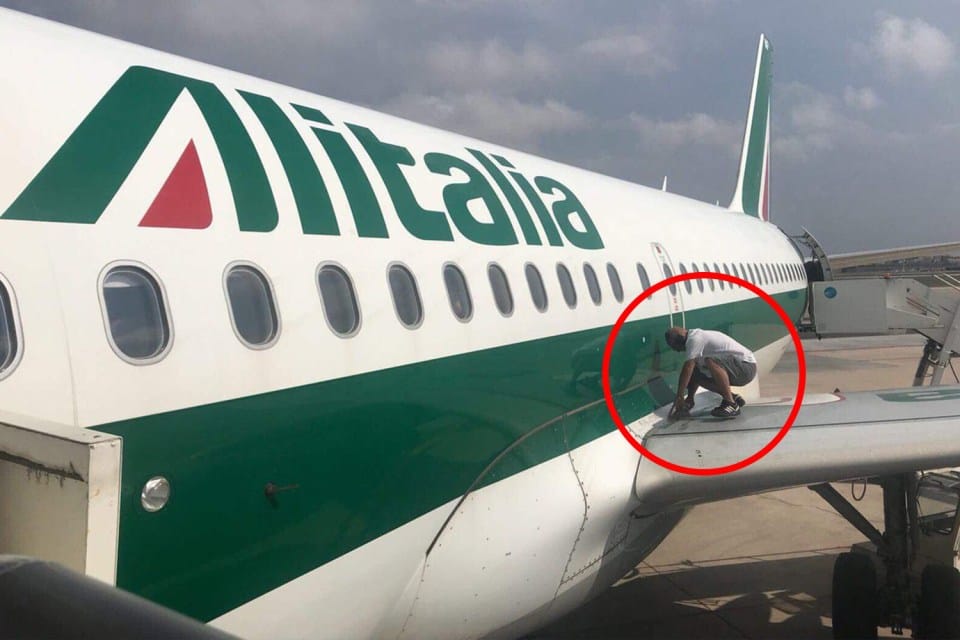Keeping it Airworthy: What is Aircraft Speed Tape?

While the image of a plane held together by duct tape might conjure up anxieties, there's a special type of tape that plays a vital role in aviation safety: speed tape.
Speed tape is an aluminum pressure-sensitive tape specifically designed for the demanding environment of aircraft. Unlike its common cousin, duct tape, speed tape boasts a much stronger adhesive and a thicker aluminum backing. This allows it to withstand the high speeds, winds, and temperatures that airplanes encounter during flight.
Temporary Repairs for Continued Flight
Speed tape isn't meant for permanent fixes. Instead, it serves as a crucial tool for making temporary repairs to non-critical parts of an aircraft.

- Sealing Minor Gaps: Speed tape can effectively seal small gaps or tears on a plane's exterior that is usually filled by an epoxy seal, preventing water or dirt from entering sensitive areas. This can be especially important for maintaining proper airflow over the wings, which is crucial for lift and fuel efficiency. Think of it as a temporary bandage for the aircraft's skin, ensuring smooth airflow and optimal performance.
- Protecting Sealant: When applying sealant to certain parts of the aircraft, like around windows or access panels, speed tape can be used to temporarily cover and protect the sealant while it cures. This ensures the sealant adheres properly and creates a watertight seal. Just like when laying a new tile floor, speed tape acts as a protective layer for the sealant until it cures completely.
- Patching Non-Critical Components: Minor damage to non-structural components, like fairings or access panels, can be temporarily patched with speed tape until a more permanent repair can be made. Fairings are external panels that help streamline the airflow around the aircraft, and access panels provide entry points for maintenance crews. Speed tape can ensure these components function properly until they can be permanently repaired or replaced. Imagine a small tear on your jacket; speed tape acts like a temporary patch, allowing you to continue wearing it until you can get it properly sewn.
Aiding in Unexpected Situations
In rare cases, speed tape has even been used to patch bullet holes on combat aircraft, allowing them to return to base safely. This is a testament to the tape's durability and the ability of aircraft mechanics to think on their feet in emergency situations. However, it's important to note that this is a very temporary solution, and the aircraft would undergo a thorough inspection and permanent repair before flying again. Think of it as a field dressing in a battlefield situation; it allows the aircraft to get back to safety, but a full medical evaluation is necessary before returning to regular duty.
Regulations and Responsible Use

It's important to remember that speed tape is a temporary solution. Any repairs made with it must be authorized by engineering teams and comply with strict regulations. Aviation authorities meticulously define the types of repairs that can be made with speed tape and for how long. Airlines face fines for improper use of speed tape, as its misuse could compromise aircraft safety. For instance, speed tape would never be used on structural components of the aircraft, as a failure in these areas could be catastrophic. Just like any medication, speed tape has its proper uses and dosages; following the guidelines is critical to ensure safety.
Final Thoughts
Speed tape serves as a testament to human ingenuity in aviation. By enabling quick and effective temporary repairs, it keeps planes operational and ensures the safety of passengers and crew. So, the next time you see an airplane, remember the unsung hero – speed tape – that might be playing a critical role behind the scenes. Even though it's not a glamorous fix, speed tape plays a part in keeping the skies safe. Imagine a seasoned pilot, facing an unexpected situation; speed tape becomes their trusty toolbox, allowing them to address the issue and get their aircraft back on track.





